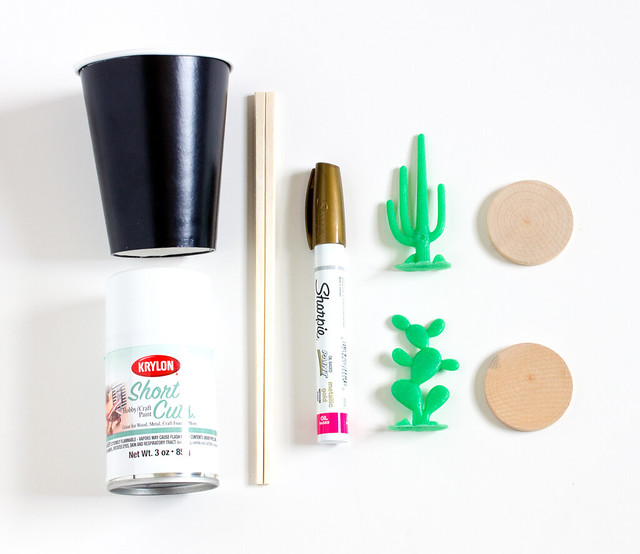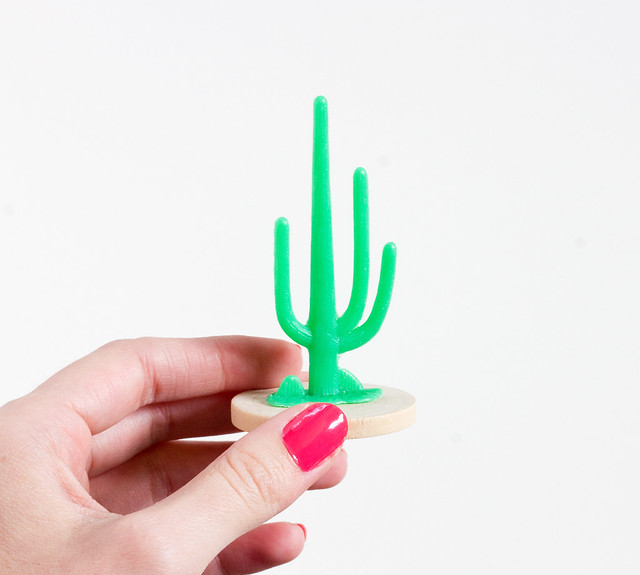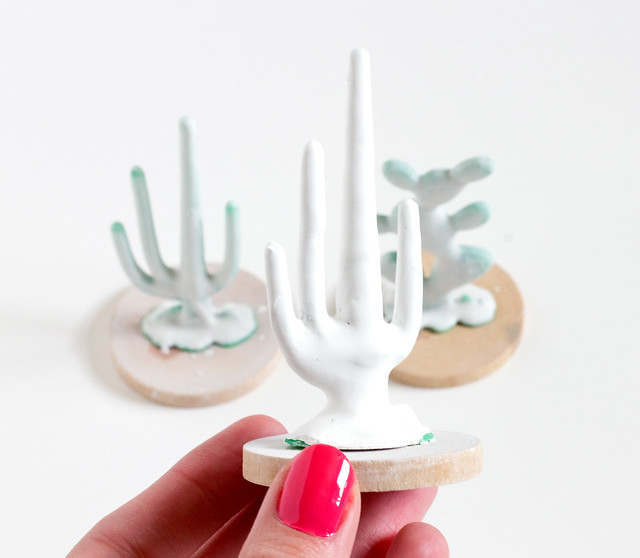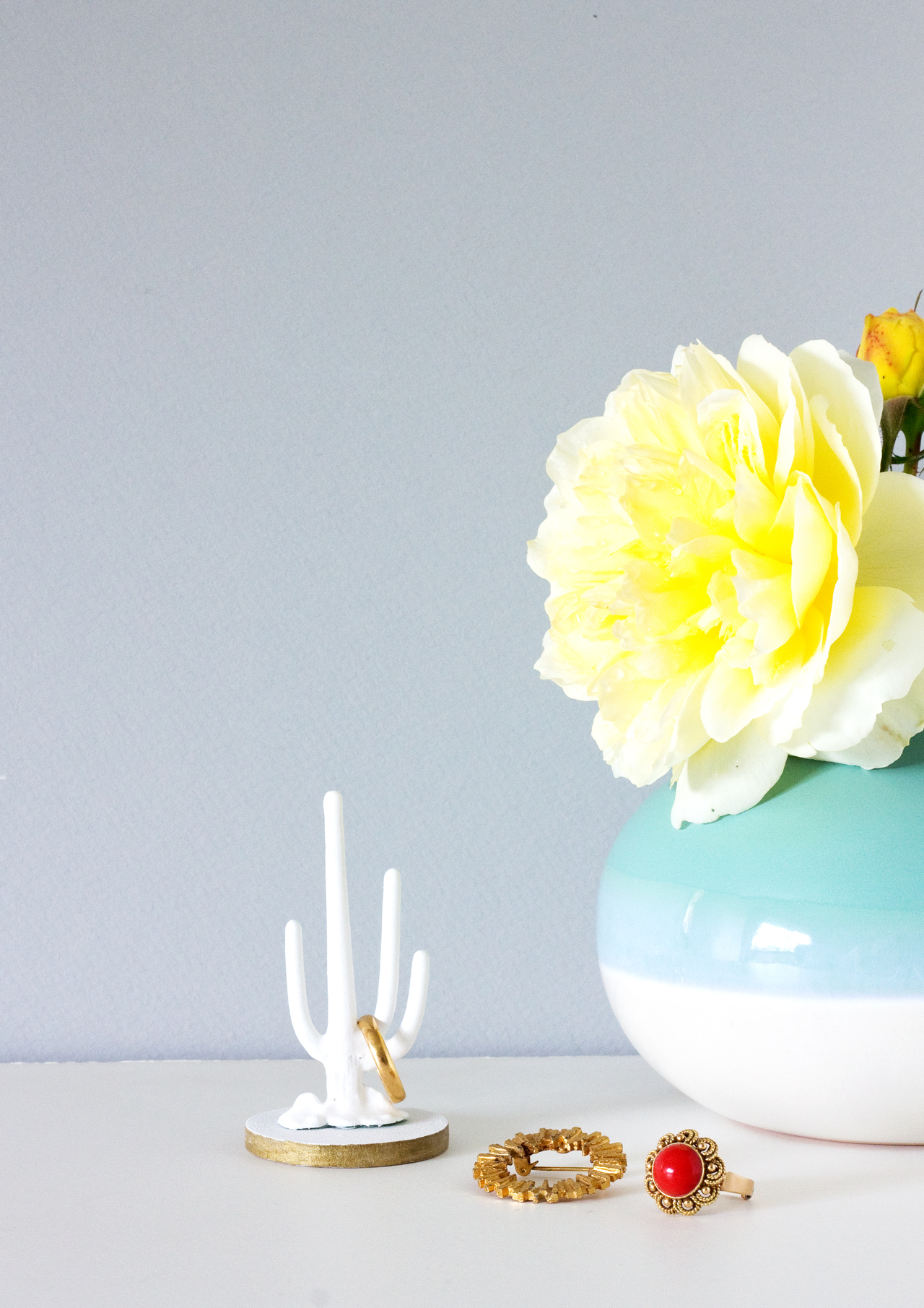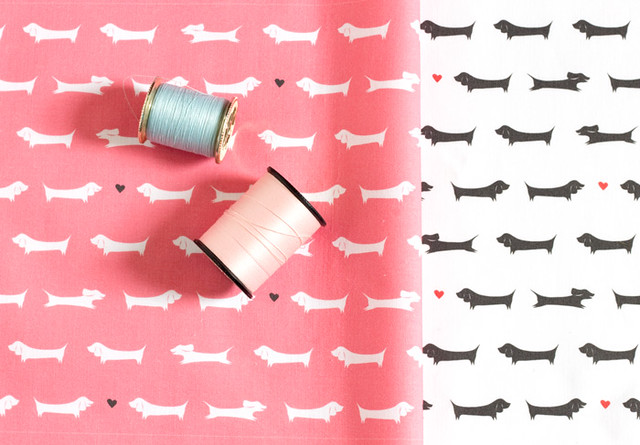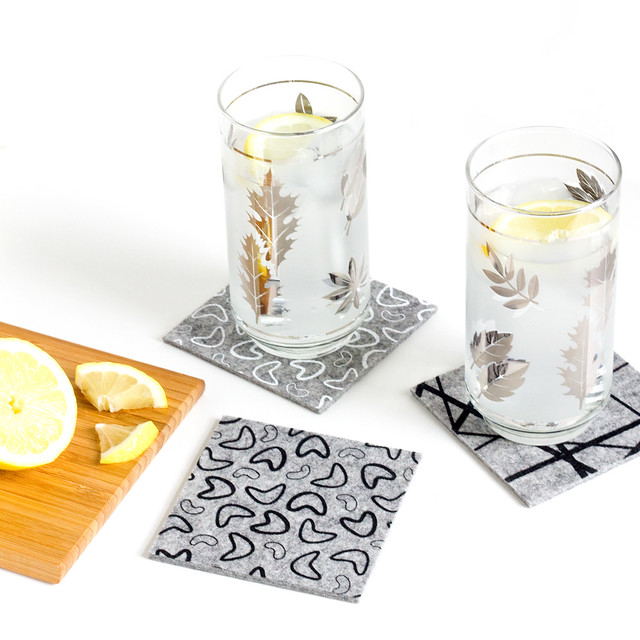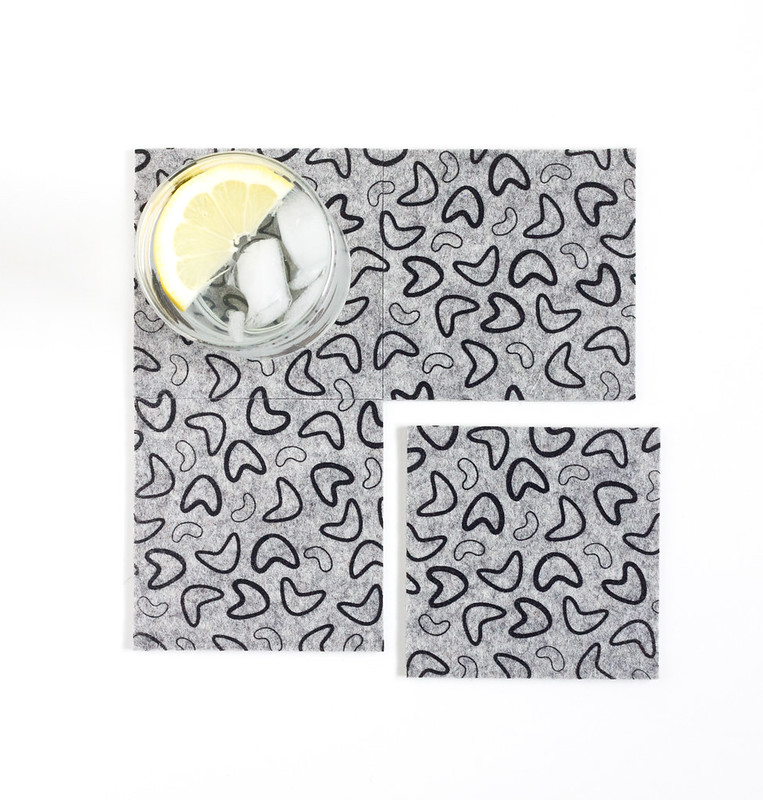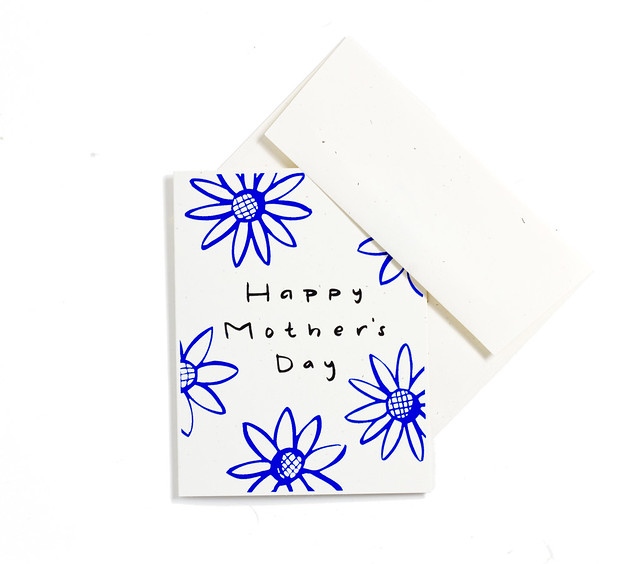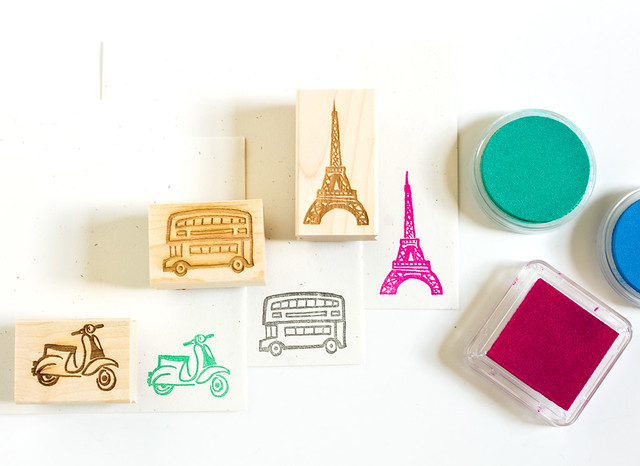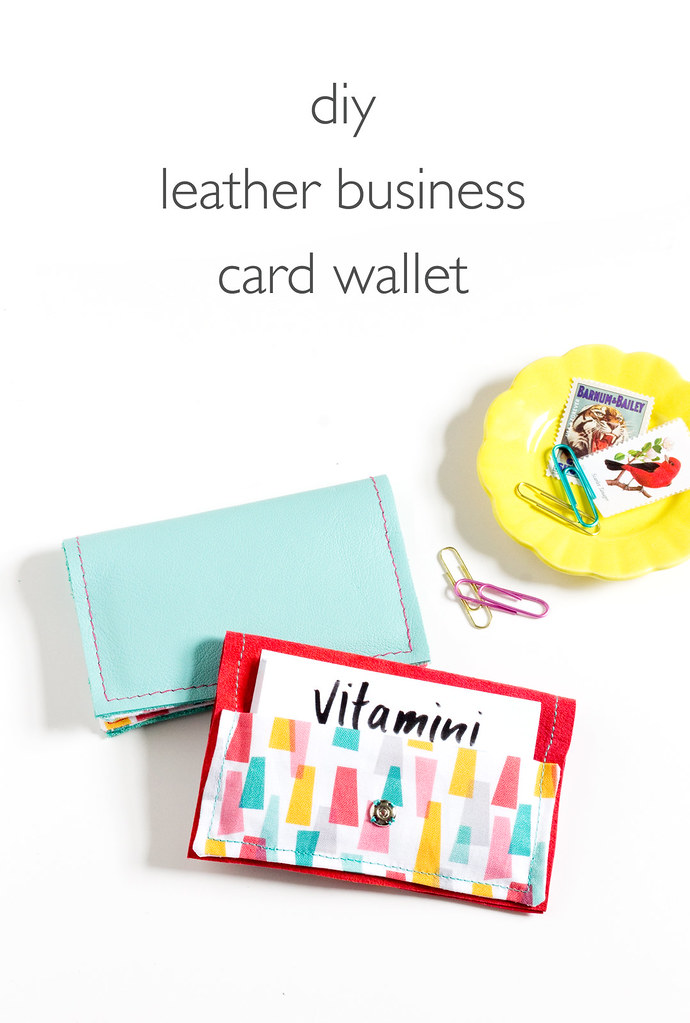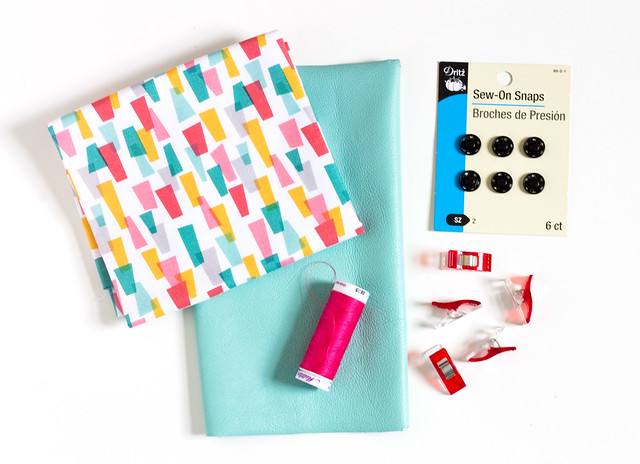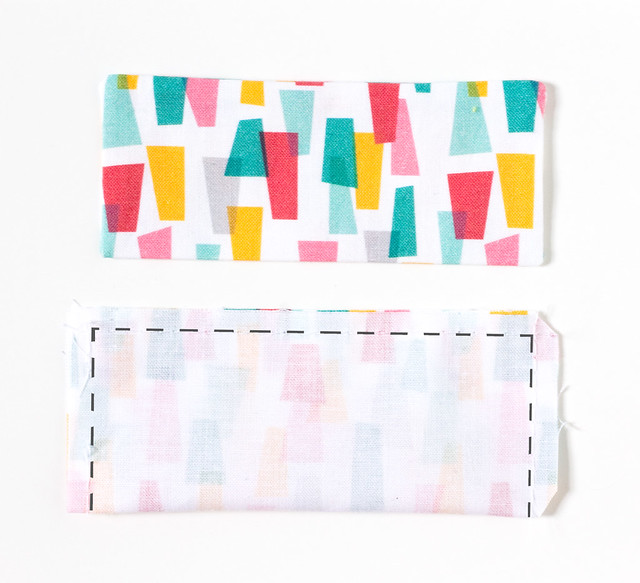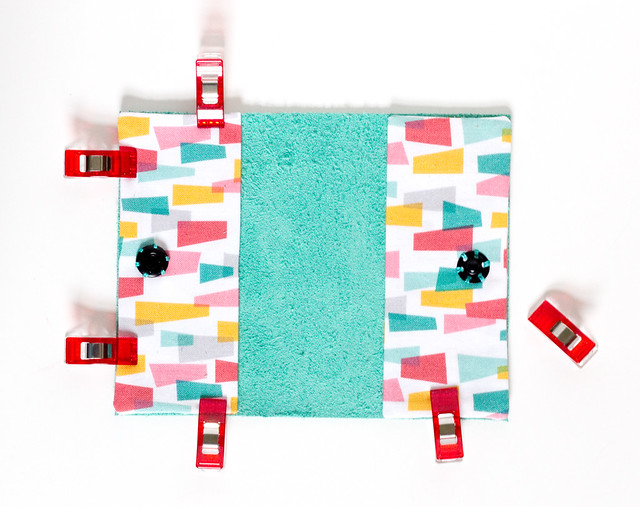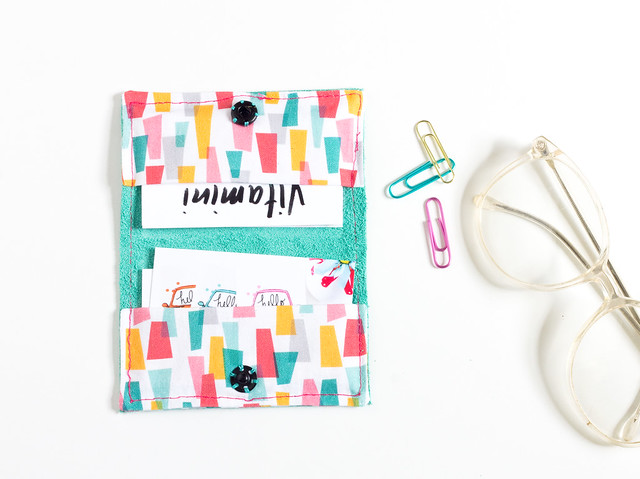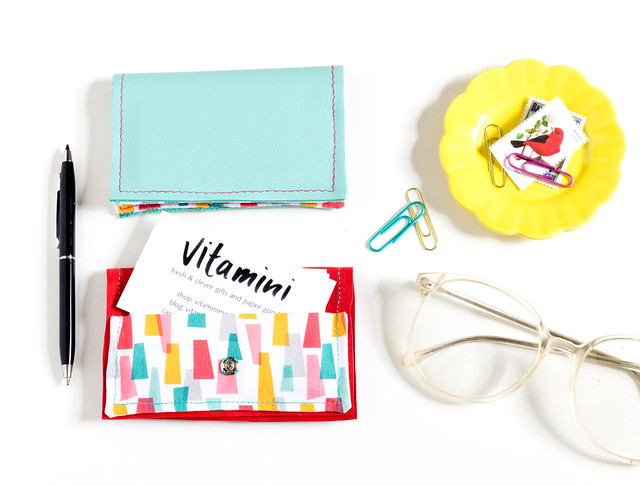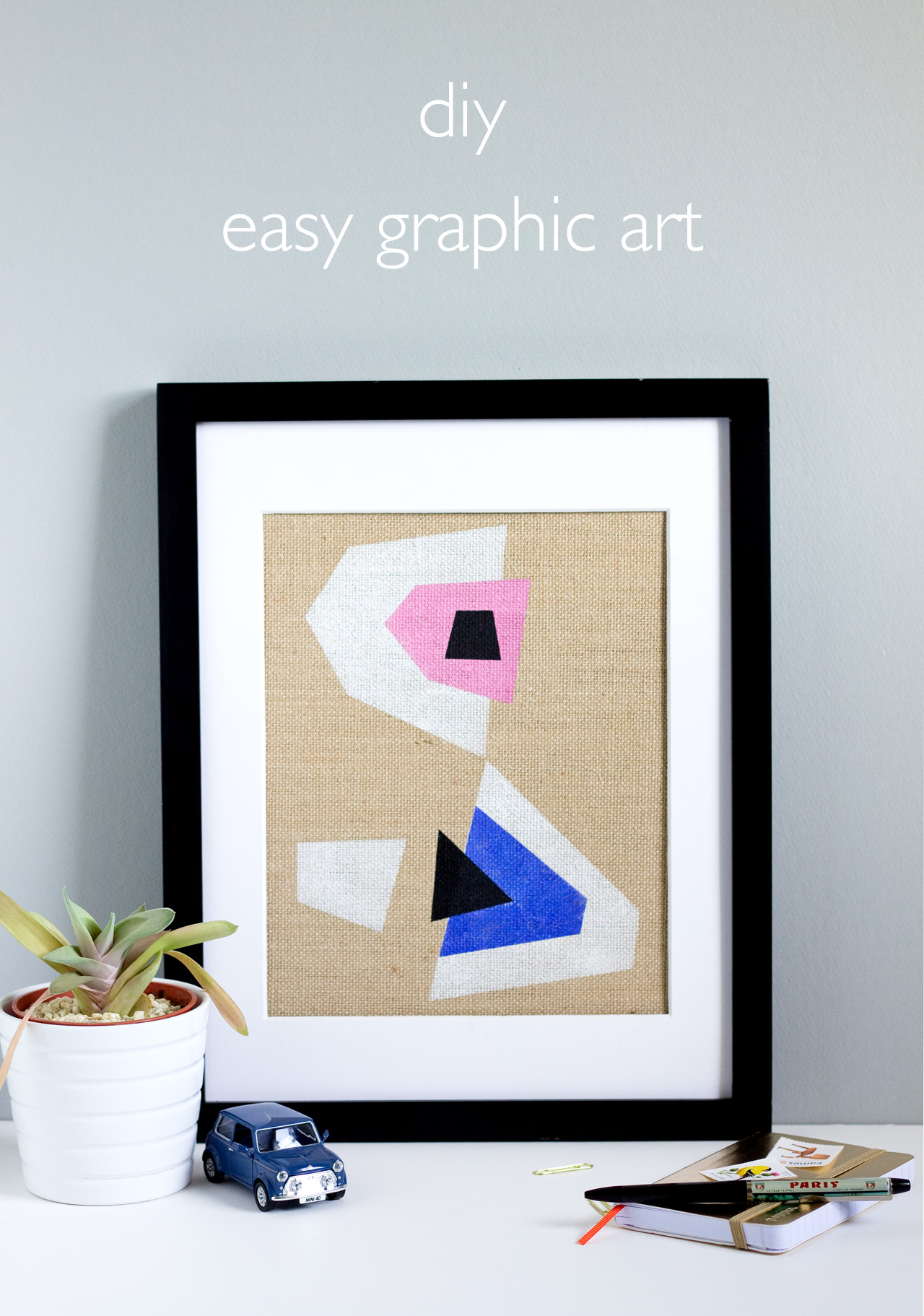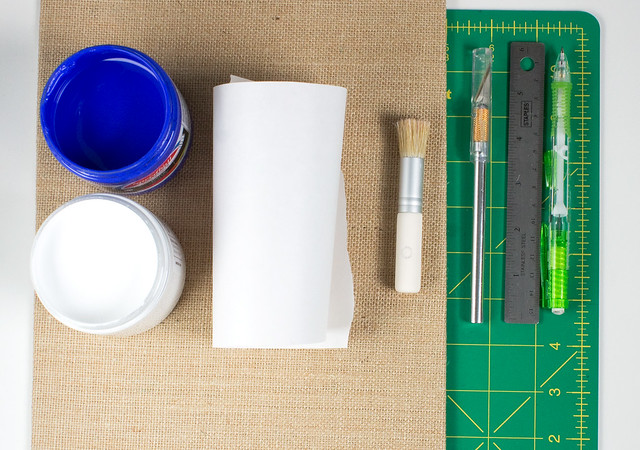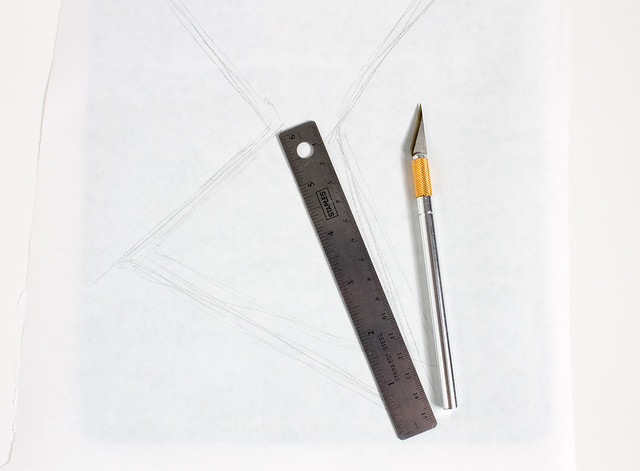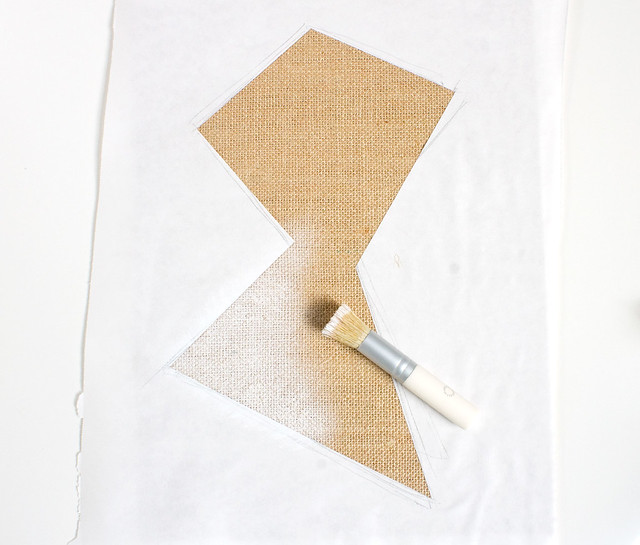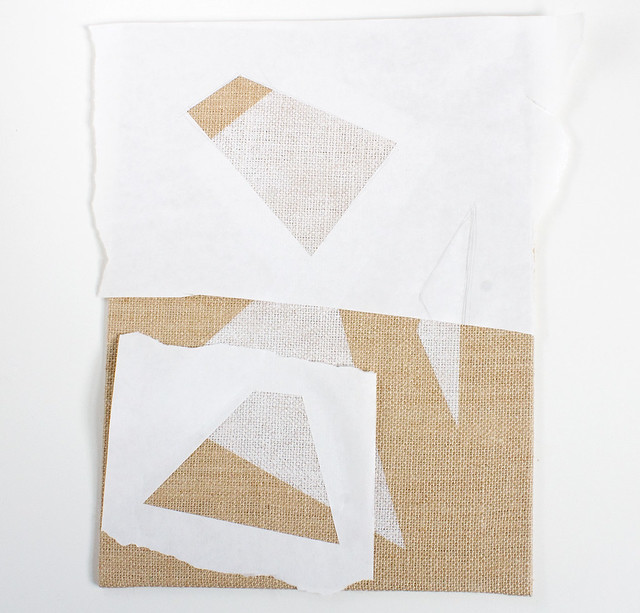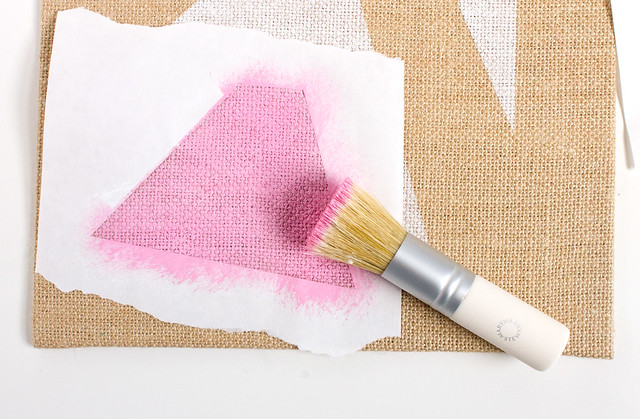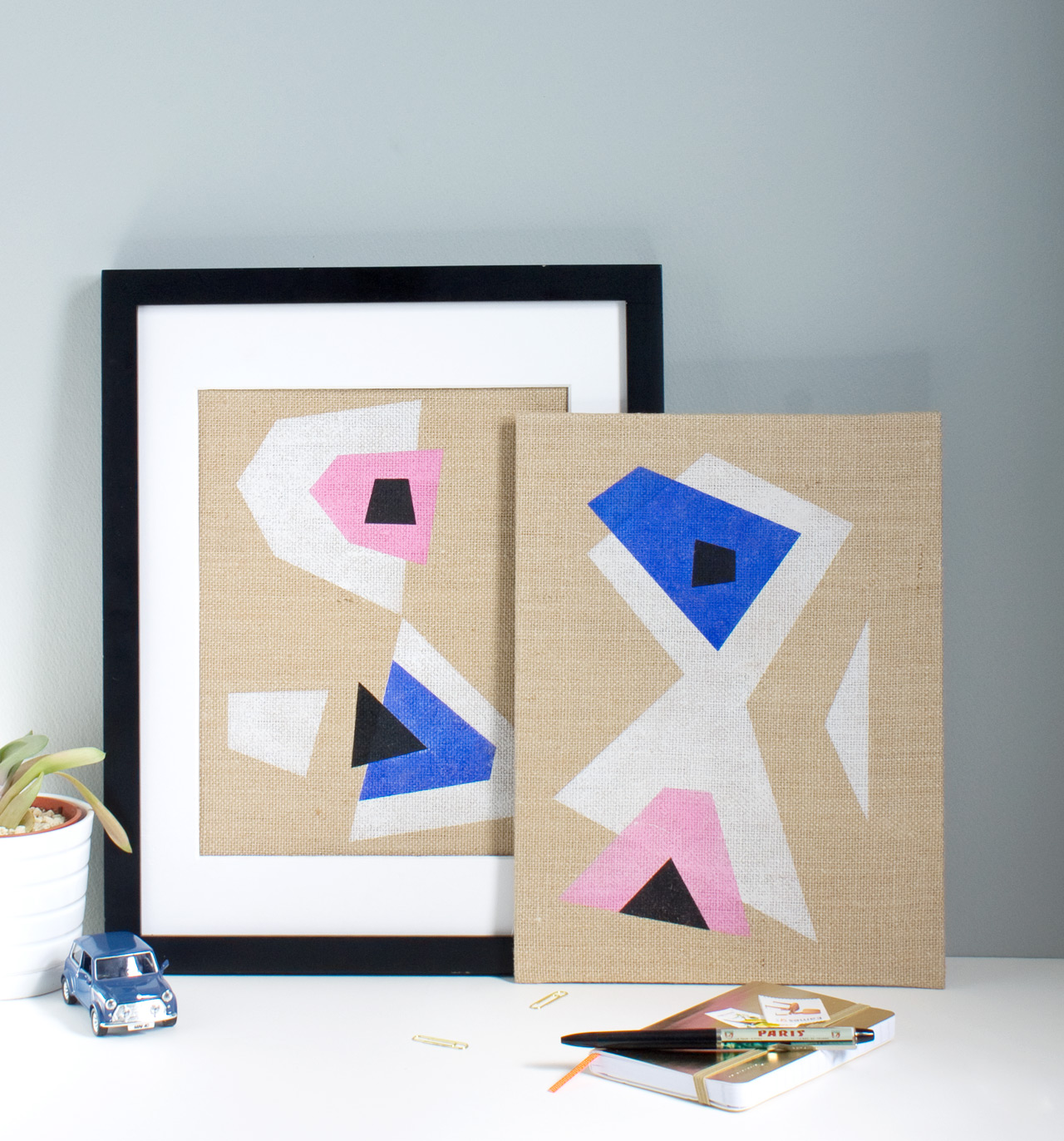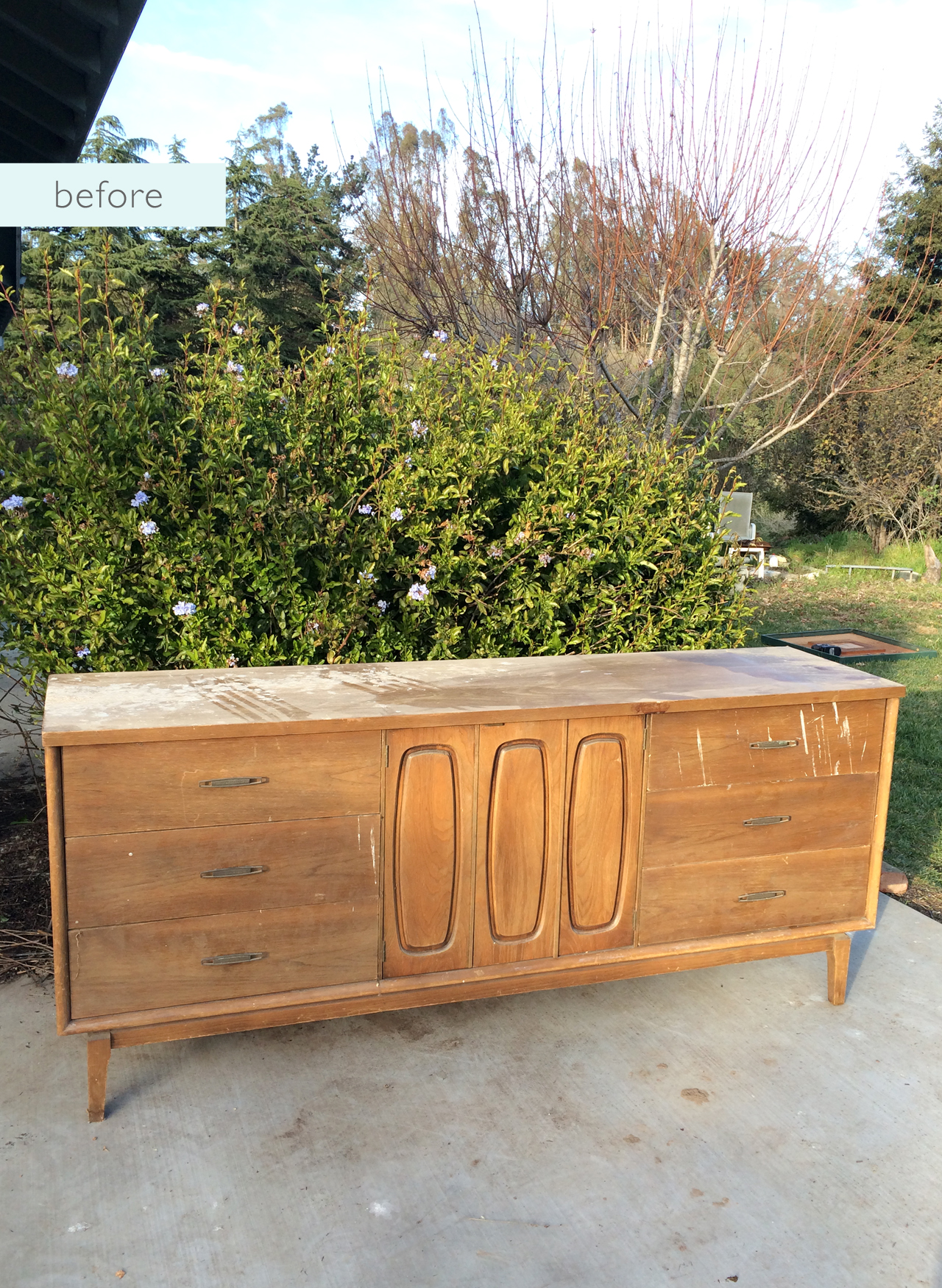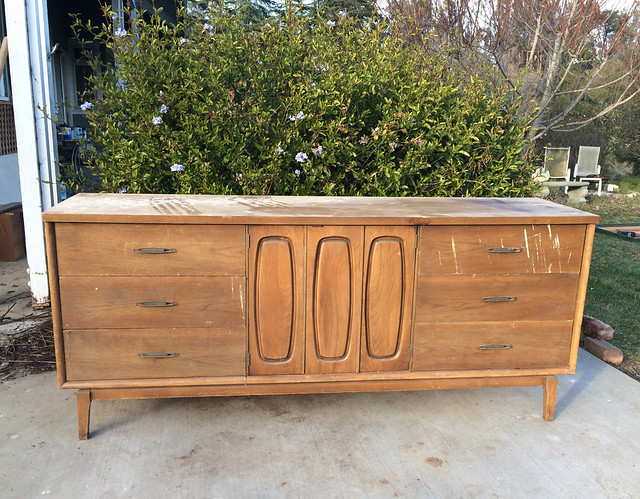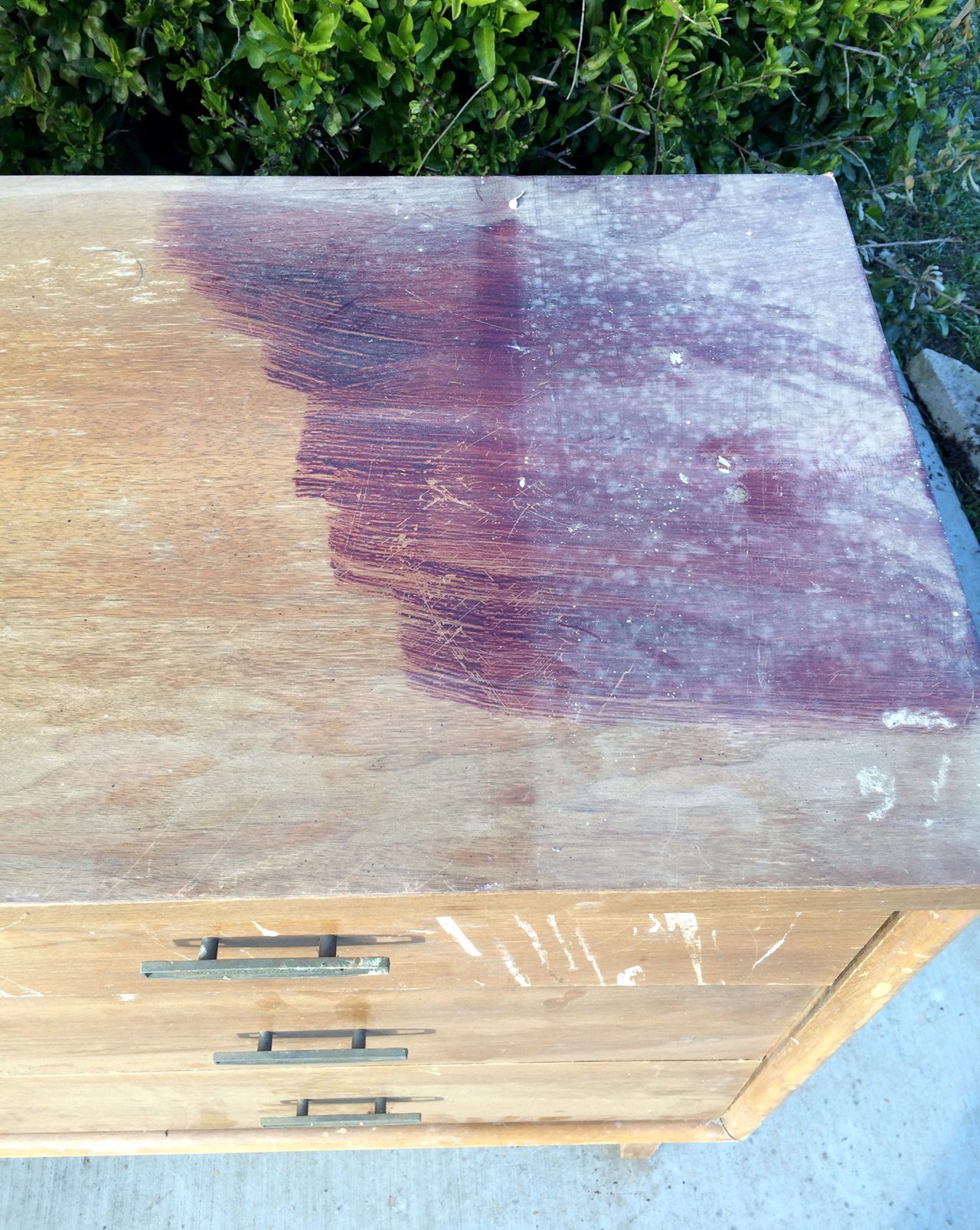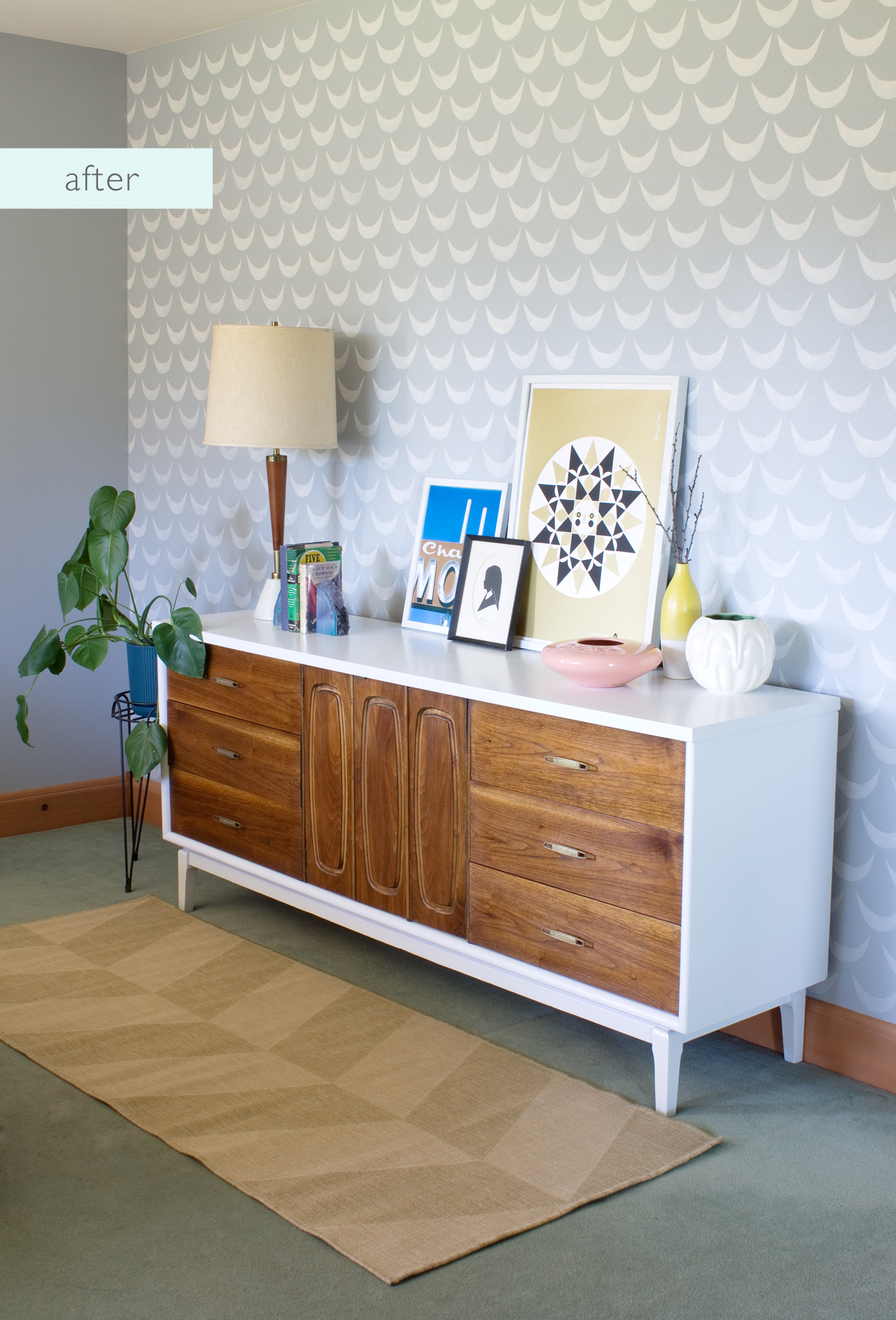 |
*Read about how I stenciled this wall, here. |
After lots of Saturdays of cleaning, sanding, and painting, my $10 Mid Century dresser is finally done! I'm so pleased with the way it came out, and honestly a little surprised that it turned out so well, considering
what it looked like when I started. It's a really nice feature piece for my new bedroom space and will provide lots of storage. It didn't cost me much, besides the original $10 investment, a couple trips to the hardware store for supplies, and a few hours of elbow grease. I'm going to outline all of the details and steps of what I did, in case you find a dingy piece of furniture on the side of the road that you'd like to fix up but don't know where to start.
Here's what I used, in chronological order:
- Screwdriver
- Citri-Strip
- Cheap paintbrush
- Plastic scraper
- Bar Keepers Friend
- Toothbrush
- Clean rags
- Watco Teak Oil
- Howard Feed-N-Wax
- Orbital sander with 100, 120, and 180 grit sandpaper
- Good quality paint brush
- Rust-Oleum Enamel in White. I wanted a semi-gloss finish so I combined a can of flat white and a can of gloss white
- Paint thinner for cleanup
- Safety supplies: eye protection, dust mask, gloves
 Drawers:
Drawers: I removed them, and the doors, from the unit and took off all of the hardware and set it aside in a bowl for later. I put a thick layer of Citri-Strip on the drawer fronts and doors with a disposable paint brush according to the directions, let it sit, and then scraped it off with a plastic scraper to remove the old finish. I repeated this two or three times to get all of the finish off and then wiped them down with a clean rag. I lucked out! The veneer on the drawers was still in good shape and had a
nice grain after the finish and the old stain was removed. I wiped on the teak oil (I used the foam version) according to the directions and followed up with the Howard's Feed-N-Wax.
Hardware: I had no clue what these handles were made of, some sort of coated metal. They were tarnished and dirty, so I tried a couple different methods to clean them up. Soap and water didn't help at all, so I tried Bar Keepers Friend and it worked great! I just sprinkled it onto the damp hardware and held it in a gloved hand while I scrubbed with a toothbrush and then rinsed off. No need to paint the hardware when it cleans up this nicely!
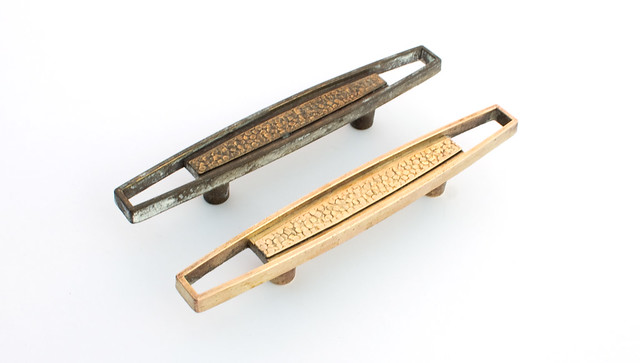
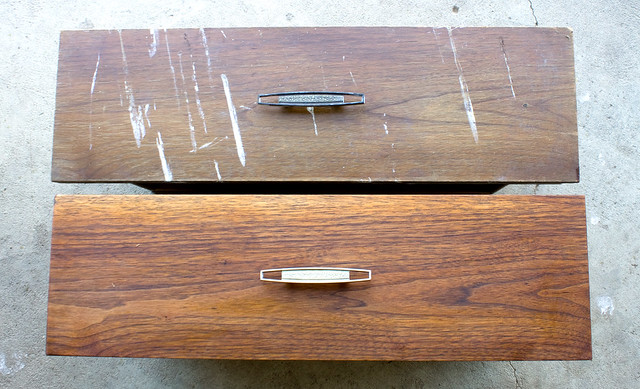
There's a before and after - Dingy, dirty (ieeu), and yellowed drawer with original hardware on the top. Cleaned, oiled, and waxed drawer with fresh hardware on the bottom. What a difference!
The Outside of the Dresser: I carefully sanded down the top and
the sides with the orbital sander and 100 grit sandpaper, making sure
not to sand through the veneer. The finish and the dark stain on the
side came off surprisingly easily. The top was in pretty good shape, but there were a few large stains that couldn't be fixed. I decided to paint the outside of the piece to
cover up the stains, so I went over the entire outside of the piece with 120 sandpaper to prep it for painting.
After doing some research, I decided oil-based enamel would be the way to go with this. It gives a hard, durable finish when it's cured which sounded great to me. I had never worked with oil-based paints before this, so it was a learning experience! They have fumes, so it's important to do the painting outside in a well-ventilated area. Also choose an area that doesn't have a lot of dust or bugs - this paint takes a while to cure and you don't want stuff sticking to the finish. I combined 1 quart of gloss white with 1 quart of flat white to get a semi-gloss finish and it was more than enough. Here are a few tips for working with oil-based paints:
- Apply thin coats, starting on one side of the piece and working to the other side.
- Once you've put the paint down, leave it alone! Brush strokes will self-level as it dries. Going back to try to smooth out a mistake will only mess up the finish. You can always sand areas with fine sandpaper between coats to disguise bigger mistakes, but most will clear up on their own.
- Make sure not to use too much paint on vertical surfaces because it may sag and leave drips. Again, these can be fixed by sanding between coats.
- Clean your brush with paint thinner
Overall, the outside of the dresser took 4 coats of paint (looking back I should have primed it beforehand, but I didn't have any oil-based primer so I skipped that step). I let each coat dry at least 24 hours before lightly sanding and recoating.
You can't see it in the photos, but I drilled an opening in the back of the piece for power cords to pass through, so I could use it as a tv stand later on. I just used a 1" hole saw in the back. All I would have to do is remove one of the drawers behind the center doors and use that area as a shelf for tv components, etc.
I put it all back together and I couldn't be happier with the finished piece! I love that it still has most of the warm wood tones, but the white exterior gives it a clean, modern look.

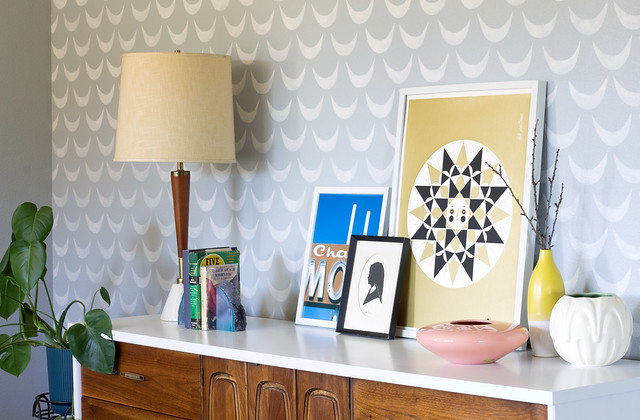
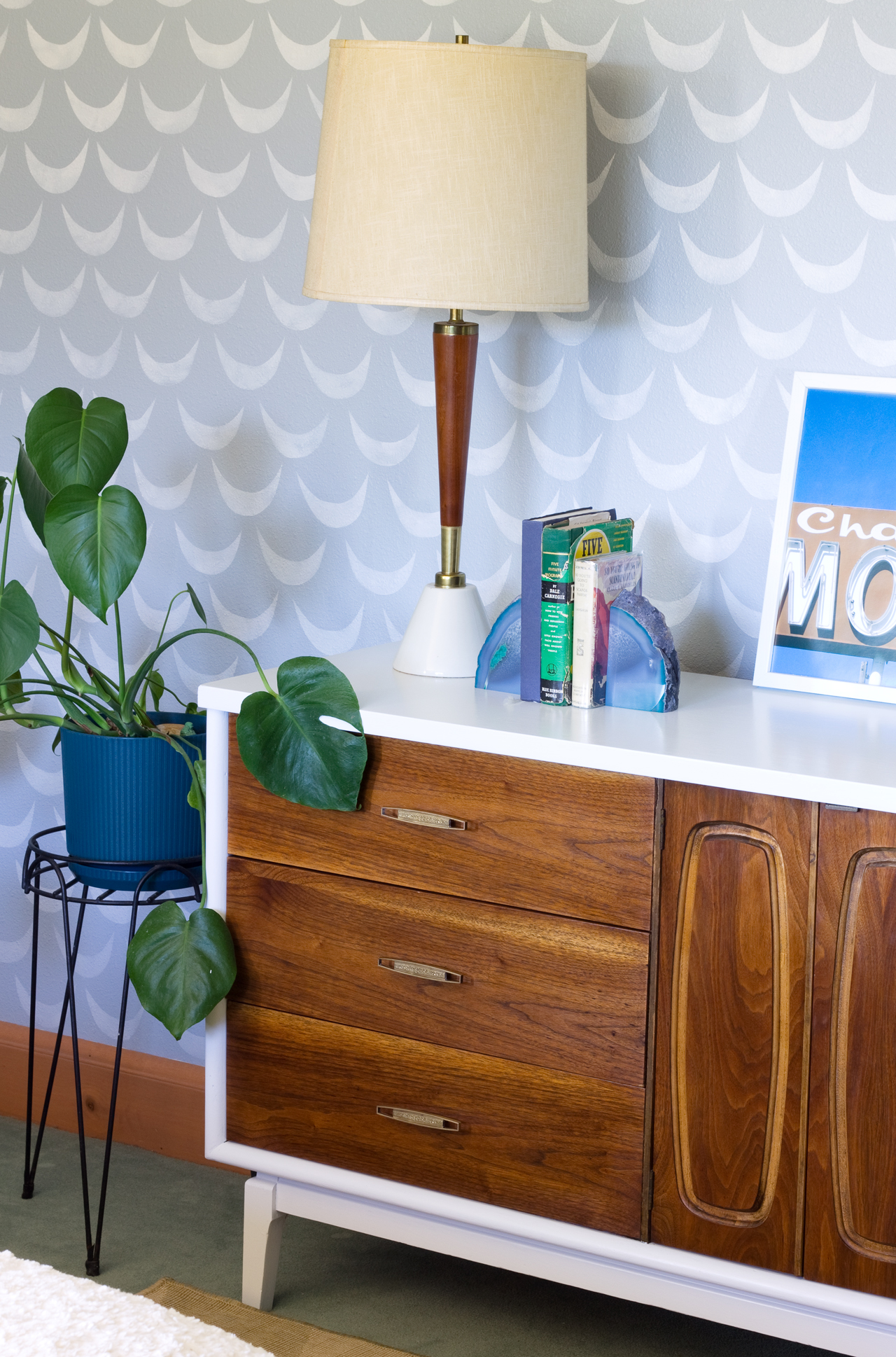
What about you - have you ever fixed up an old piece of furniture? Did you learn any good tricks along the way? I'd love to hear about them!
Have a great weekend!

